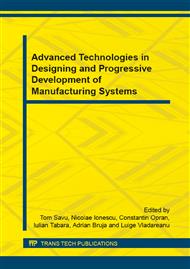p.233
p.239
p.245
p.251
p.257
p.263
p.269
p.275
p.281
Caveats in Modeling the Elasto-Plastic Behavior of Materials to Alternate Loads
Abstract:
Bilinear hysteretic models are an attractive choice in modeling the elasto-plastic behavior of various materials to alternate loads, due to their simplicity and ease of interpreting the results. However, choosing the parameters of the model without taking into account some restrictions can lead to highly unrealistic results. These restrictions are analyzed, and the allowable ranges for the model parameters are determined. The conclusions can be used for a wide range of plastic and composite materials. The significant errors that can occur in the case of the inadequate selection of model parameters are illustrated by a practical application.
Info:
Periodical:
Pages:
257-262
Citation:
Online since:
May 2015
Authors:
Price:
Сopyright:
© 2015 Trans Tech Publications Ltd. All Rights Reserved
Share:
Citation:


